How to Make Dandelion Tea for Health Benefits?
Medically reviewed by our experts
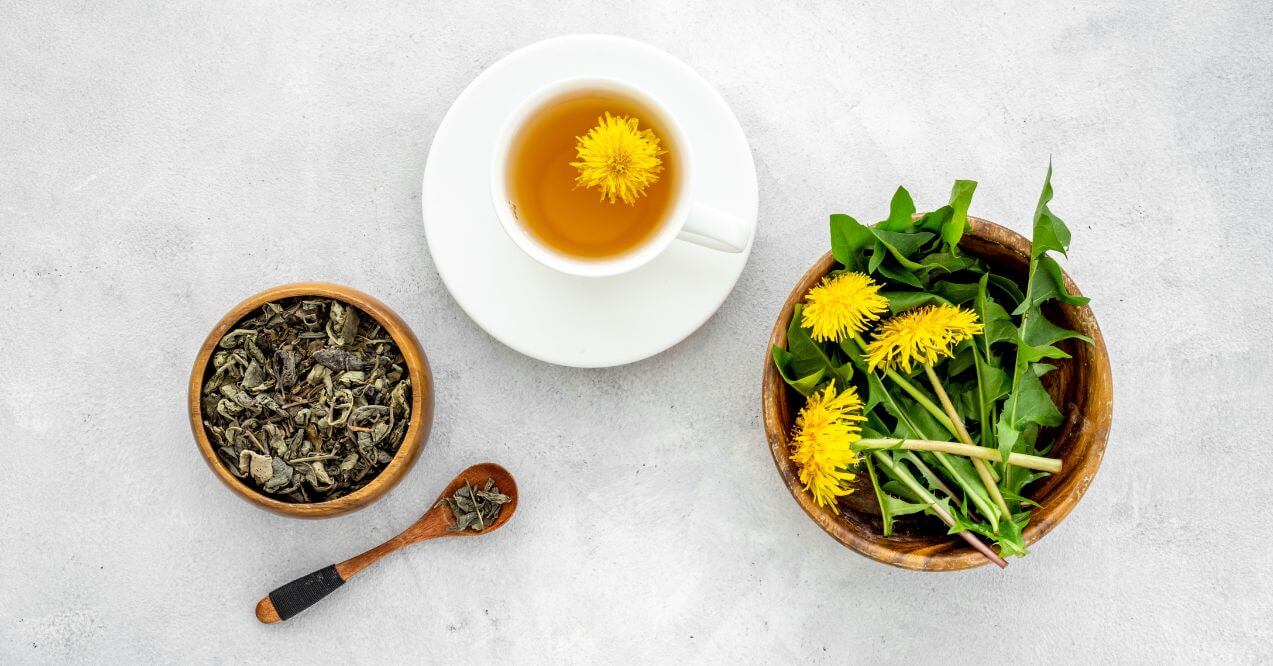

Learning how to make dandelion tea transforms common garden plants into nutrient-rich beverages that support natural wellness. This traditional herbal preparation offers vitamins A, C, and K along with minerals that may support digestion and hydration.
Our guide provides clear instructions for harvesting, preparing, and brewing three distinct dandelion tea recipes from roots, leaves, and flowers.
What Is Dandelion Tea and Why Is It Popular?
Dandelion tea comes from steeping the roots, leaves, or flowers of Taraxacum officinale in hot water. Each part creates a distinct beverage with unique nutritional profiles and flavors. Traditional cultures across Europe and Asia have used dandelion preparations for centuries as gentle tonics.
Modern wellness enthusiasts value dandelion tea for its potential to support natural detoxification pathways and promote hydration. The plant provides substantial amounts of vitamins A, C, and K, plus minerals including iron, potassium, and magnesium. These nutrients may help maintain normal digestive function and support the body’s natural elimination processes.
Nutrients Found in Dandelions
Dandelions pack impressive nutritional density into every part:
- Vitamin A – Supports vision and immune function
- Vitamin C – Acts as an antioxidant and aids collagen production
- Vitamin K – Essential for bone health and blood clotting
- Potassium – Helps regulate fluid balance and muscle contractions
- Iron – Necessary for oxygen transport throughout the body
- Inulin – Prebiotic fiber that may support beneficial gut bacteria
How to Harvest and Prepare Dandelions for Tea
Safe dandelion harvesting requires selecting plants from areas free of pesticides, herbicides, and pet waste. Look for dandelions in your own untreated yard or natural areas away from roads and industrial zones. True dandelions grow on single hollow stems that release milky sap when broken.
The best time for harvesting depends on which part you need. Collect leaves in early spring for milder flavor, flowers when fully open on sunny days, and roots in fall when inulin content peaks. Learning how to harvest dandelion for tea properly ensures maximum nutrients and safety.
Harvesting Best Practices
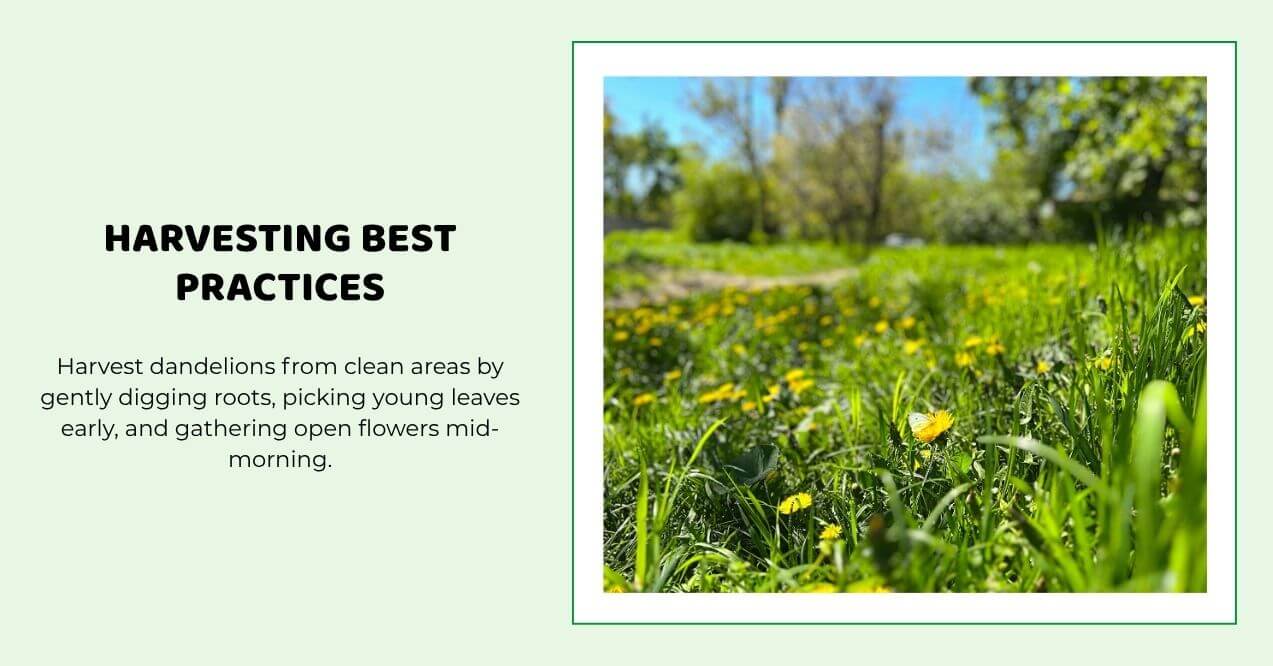
Start by locating clean dandelion patches away from contamination sources. Use a weeding fork or trowel to loosen soil around roots, digging 4-6 inches deep to extract the entire taproot intact. Pick young leaves before flowering for less bitterness.
Harvest flowers mid-morning after dew evaporates but before afternoon heat. Select fully opened blooms and pinch stems just below the flower head.
Cleaning and Prepping Dandelions
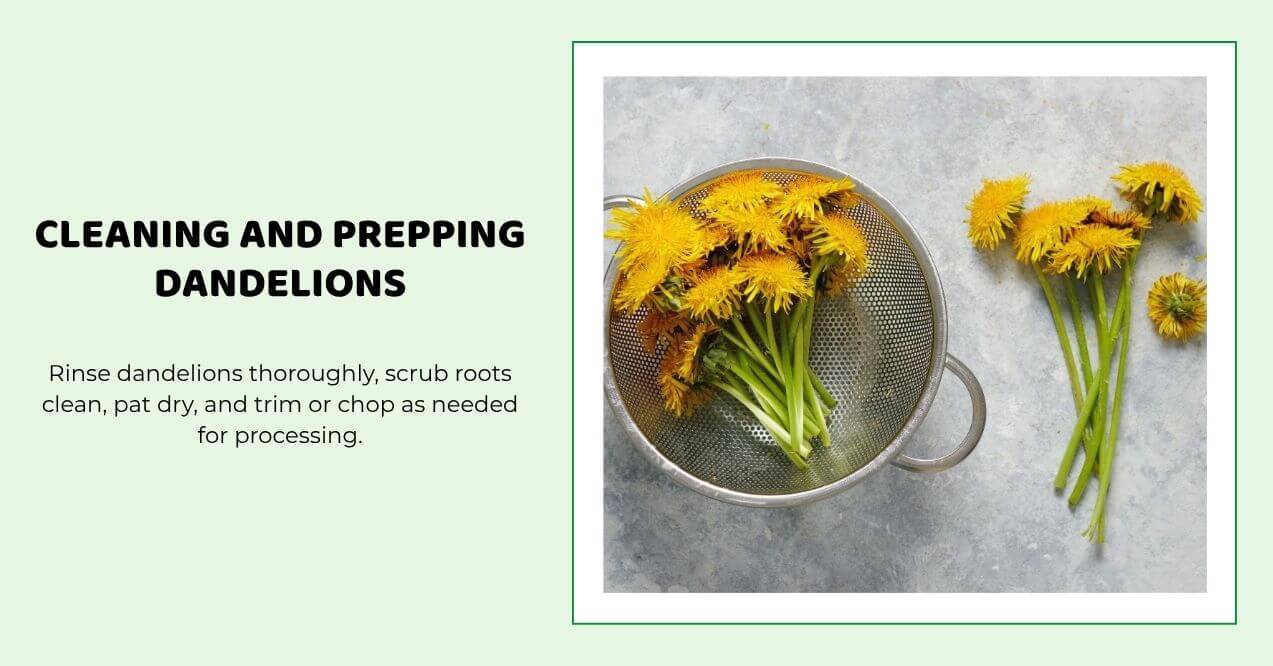
Rinse all plant parts thoroughly under cool running water, checking flowers for insects. Scrub roots with a vegetable brush to remove soil, then peel outer skin if desired. Pat leaves and flowers dry with clean towels.
Chop roots into quarter-inch pieces for even roasting or drying. Remove any wilted or damaged portions before processing.
Step-by-Step Guide How to Make Dandelion Tea at Home
Creating dandelion tea involves different methods depending on which plant part you use. Root tea requires roasting for a coffee-like flavor, while leaf and flower teas need only simple steeping. Understanding how do I make dandelion root tea versus other preparations helps you choose your preferred style.
Fresh ingredients generally produce more vibrant flavors than dried, though both work well. Water temperature and steeping time significantly impact the final taste. Adding natural sweeteners or citrus can balance any bitterness.
Using Dandelion Root for Tea
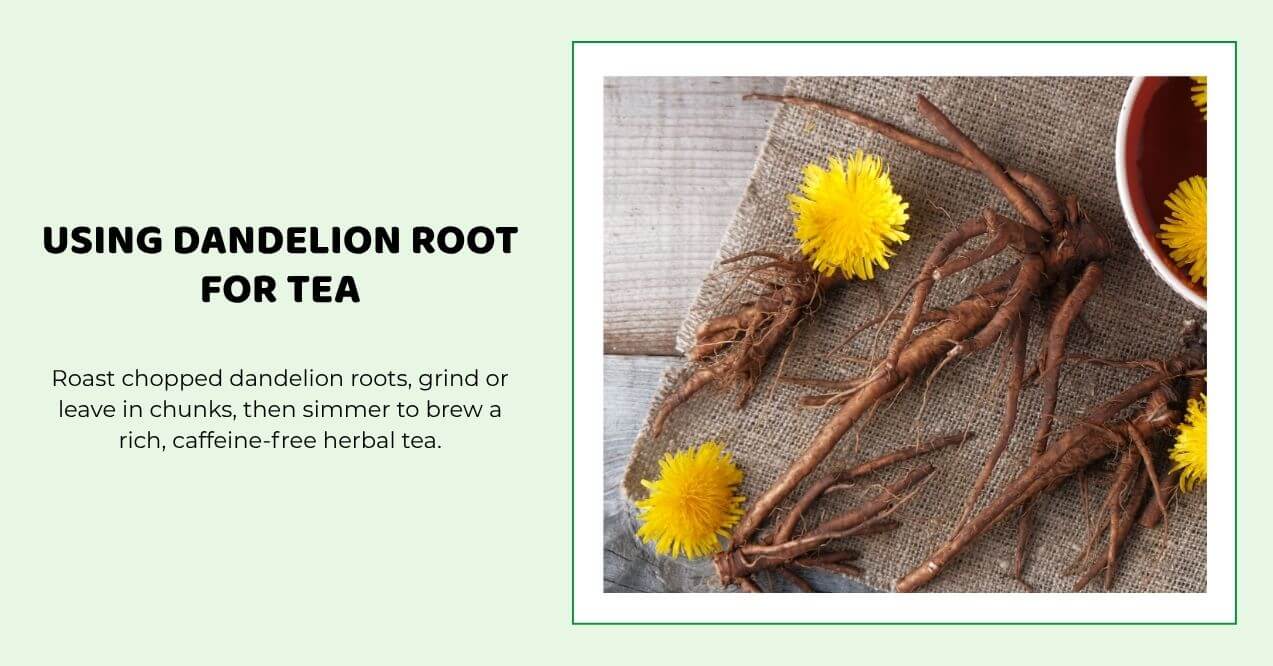
Learning how to make dandelion root tea starts with proper roasting. Spread cleaned, chopped roots on a baking sheet and roast at 350°F for 15-20 minutes until dark brown and aromatic. Cool completely before grinding in a coffee grinder or leaving in chunks.
Brew using 1 tablespoon roasted root per cup of boiling water. Simmer for 10 minutes, then strain. The resulting beverage has an earthy, slightly nutty flavor reminiscent of coffee without caffeine.
Making Tea with Leaves or Flowers
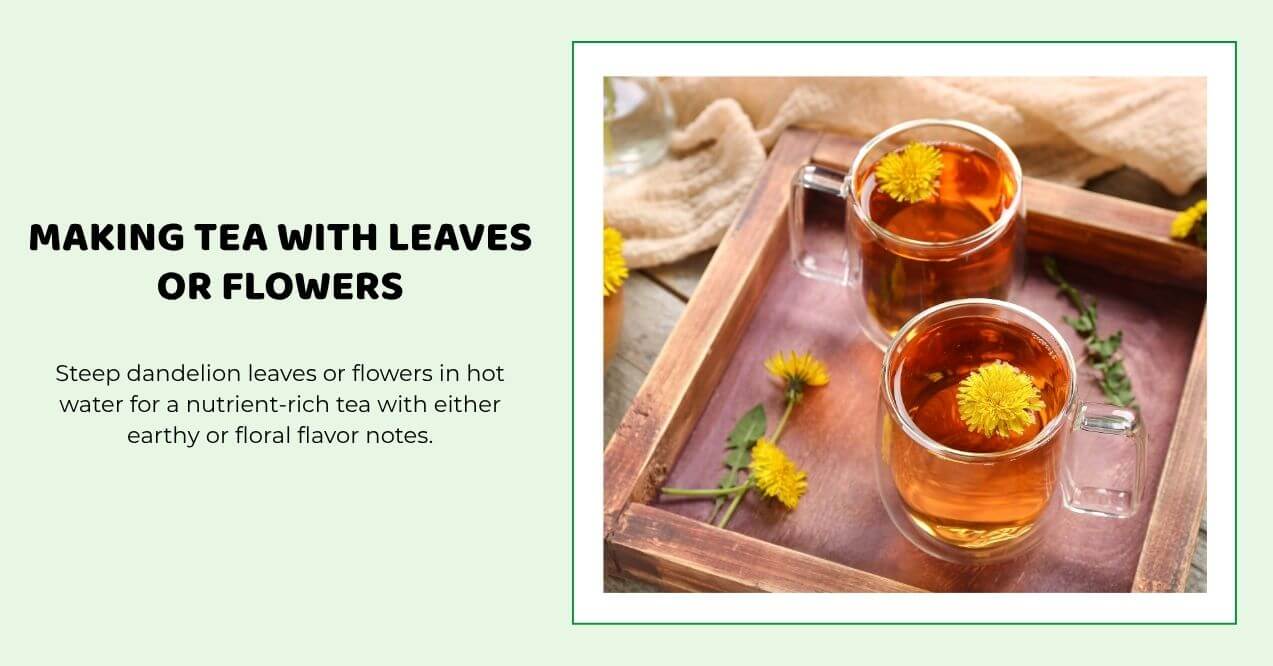
Dandelion leaf tea requires 1-2 teaspoons dried leaves or 1 tablespoon fresh per cup. Pour water heated to 175°F over leaves and steep 5-10 minutes. Longer steeping increases bitterness but also nutrient extraction.
For flower tea, use 1 cup fresh petals per 2 cups boiling water. Steep covered for 20 minutes, creating a golden tea with delicate, honey-like notes.
Health-Supporting Benefits of Dandelion Tea
Dandelion tea is valued for its natural support of various bodily functions, thanks to its rich nutrient and plant compound profile:
- Digestive Support – Inulin from dandelion roots may help nourish beneficial gut bacteria.
- Hydration & Electrolyte Balance – Naturally high in potassium, dandelion tea contributes to fluid and electrolyte regulation.
- Natural Detox Support – Traditionally used to assist the body’s natural detoxification pathways.
- Gentle Diuretic Effect – May help flush excess fluids while providing essential minerals.
These properties align with natural 7-day liver cleanse diet approaches that emphasize gentle, nutrient-rich beverages. For those looking to further support digestion, exploring recipes like 7 Best Smoothies for Constipation Relief can provide additional fiber and hydration benefits that complement the use of herbal teas.
Why Dandelion Is Popular in Herbal Wellness
Historical use of dandelion spans centuries across multiple cultures, from Traditional Chinese Medicine to European folk remedies. Practitioners traditionally recommended it for supporting liver function and promoting healthy digestion. Modern interest focuses on its antioxidant compounds like beta-carotene and polyphenols.
Today’s wellness community appreciates dandelion tea as an accessible way to incorporate beneficial plant compounds into daily routines.
How Supplements Can Complement Dandelion Tea
While dandelion tea is a simple and enjoyable addition to many wellness routines, some people also incorporate products like liver detox supplements as part of their broader lifestyle approach. These types of supplements often feature botanical blends, including dandelion root, and are typically chosen by individuals seeking to support their overall wellness routines through a variety of herbal traditions.

Likewise, many people enjoy pairing herbal teas with nutrient-focused options such as anti-inflammatory smoothie recipes to help maintain a balanced and varied diet. These combinations are often part of personal wellness habits centered on hydration, nutrition, and mindful living.
When considering new supplements or making changes to your routine, it’s always wise to consult with a healthcare professional to ensure they align with your individual health needs and goals.
Conclusion
Learning how to make dandelion tea connects you with traditional wellness practices while providing accessible nutrition from plants growing right outside your door. Whether you prefer the robust flavor of roasted root tea, the gentle taste of flower infusions, or the mineral-rich leaf preparations, each offers unique benefits. Start with small amounts to assess your body’s response and experiment with different brewing methods.
This simple practice transforms overlooked plants into valuable additions to your wellness routine. Regular enjoyment of dandelion tea may support natural body functions while fostering a deeper connection with seasonal rhythms and nature’s abundance.
Yes, removing green sepals reduces bitterness. Pluck only yellow petals for the sweetest flavor, though whole flowers are safe to use if you don’t mind slight bitterness.
People taking diuretics, blood pressure medications, or lithium should avoid dandelion tea. Those allergic to ragweed, daisies, or marigolds may also react to dandelions.
Use 8-10 fresh flower heads per cup of tea. For stronger flavor, increase to 12-15 flowers. Dried flowers require about half the amount.
Yes, dried flowers work well and store longer. Use half the amount of dried versus fresh flowers and steep slightly longer for full flavor extraction.
FAQ
References